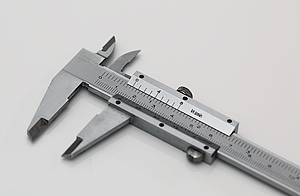- DE
- EN
The correct adjustment of the tire radii front and rear is the basis of a well-functioning traction control. This is because the slip (relative speed track to tire) part of the traction control calculates on the speed difference of front and rear wheels. As it is not the speed of the wheel but its rotational speed that is measured, the ECU calculates the wheel speed using the tire radius.
In the stock state, a fixed value for the front wheel is stored and the rear wheel radius is teached in via adaptation by itself. In order to ensure a constant behavior of the traction control, the radii are firmly deposited in the RS²E Race Mapping for both the front and rear wheels - analogous to the BMW HP Race Power Kit. The filed radii are based on average values of all common racing tires and are continuously adapted to the market. The resulting error of up to 2% is almost identical when using tires from the same manufacturer on the front and rear wheels, so that the slip calculation still works properly. If special tire configurations are used (for example different manufacturers on the front and rear wheels), we can program the corresponding values for each individual customer.
Of course, the tire wear has a considerable influence on the wheel radius. Especially if, for example, a new front and a heavily used rear tire is mounted. To compensate this while riding, the BMW S1000RR models from 2015 and the HP4 have the DTC +/- switch fitted on the left handlebar. To compensate the tire wear in this example, if necessary, the DTC slip offset via the +/- switch would have to be reduced by 2 steps in the - (minus) direction. A general value can not be given because the mechanical grip of the tire changes continuously due to wear.
Tire radii can also be individually programmed with the optional Race Calibration Kit (RCK). However, this functionality is only enabled in conjunction with RS²E Race Mapping or HP Race Power Kit. In order to use the RCK tire radii, the fields must be activated as shown in the picture and the data must be successfully transferred to the ECU via the "write data to the control unit" button. As soon as the hooks in RCK have been removed and the data written to the ECU, the system is working again with the tire radii of the ECU data (RS²E Race Mapping).

Please proceed as follows:
Models without DTC +/- switch (e.g. RR before 2015 or R/XR):
Since here only the driving mode can be used for the fine adjustment of the DTC, we recommend here to use front and rear tires always of the same type. Alternatively, we can program individual radii or the RCK (if available) can be used to set the radii.
Models with DTC +/- switch (e.g. RR from 2015 or HP4):
Here a possibly occurring radius error can be compensated via the DTC +/- switch.
Newer generation models (e.g. RR from 2019 with BMS-O ECU):
Here the self-learning function of the tire radii works so reliably that it is also retained with our Race Mappings.